I purchased the Oura ring because I was in a period of significant stress, my sleep was a mess and I needed to find out how to improve it. Since the Oura ring is recognized as one of the best sleep trackers available on the market today, I decided to try it out.
Danish version of this article
The Oura ring is a relatively discreet wearable, slightly larger than your average ring, and as we covered in this article, is available in a slimmer design with diamonds.
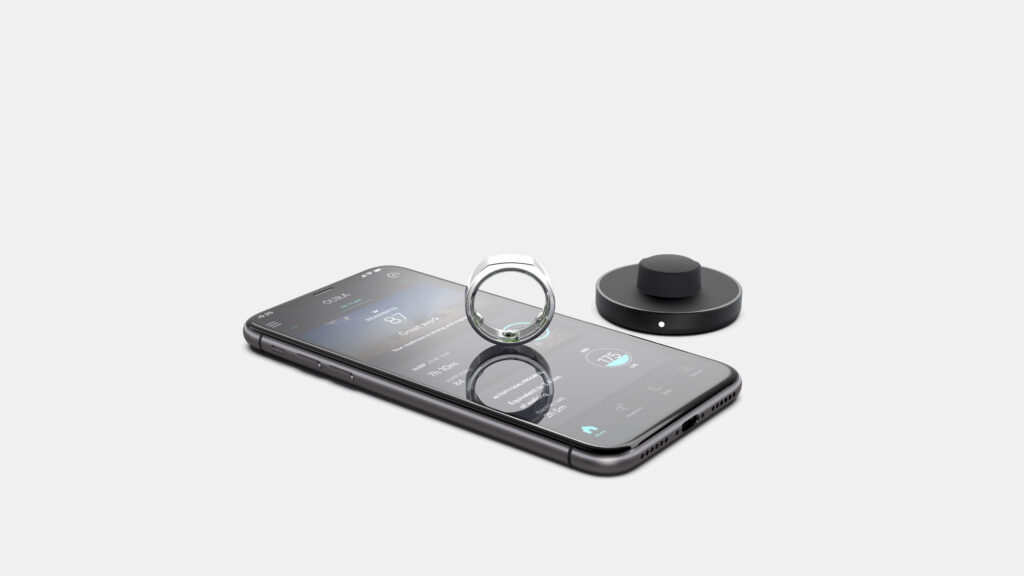
What I like about it is that it is a ring. I already have several wrist-worn wearables that I’ve tried and which later ended up in a kitchen ‘junk’ drawer because I simply didn’t like wearing them.
I’ve now had the Oura ring for 5 months, so this is the perfect time to write a review, and I’ve decided that in this review, you’re hearing my personal, first hand experience, so let’s jump in:
What does it measure?
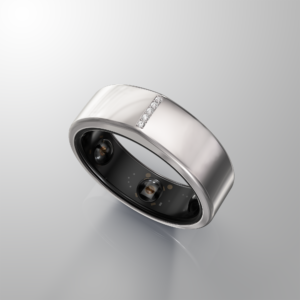
The Oura ring measures sleep, readiness and activity through the use of sensors which can measure heart rate, heart rate variability (useful for stress measurement), respiration, temperature and movement. If you’re curious and nerdy like me, you can read all about these sensors here.
Sleep:
When sleeping, the ring measures how many hours you sleep and what type of sleep you have had such as deep sleep, REM sleep, light sleep and awake time. It measures how much you move during your sleep (restfulness), how long it takes you to fall asleep (latency), when you go to bed and wake up (timing) and also your body temperature.
For me, the sleep measurement has been really interesting. I can see clearly that if I have a glass of wine after a long day of running my own company, then I don’t sleep well, at all. I toss and turn (restlessness) and I am awake and have a light sleep with few periods of deep sleep.
The same thing happens if I eat before bed. I’ve started Intermittent Fasting and have noticed a huge improvement in my sleep when I stop eating at 20:00 and go to bed at a reasonable time (23:00).
Here is an overview of last night, and a night last week. You can see the difference in sleep between the two in terms of deep sleep – 36 minutes versus 2 hours, four minutes, and all the other factors. This tells me that even going to bed too late (12:29) meant I got some good, deep sleep, but my total sleep efficiency (83%) was much lower than when I went to bed a bit earlier (23:40) and got a sleep efficiency of 90%.
Of course, it all depends how you feel when you get out of bed, but this interface has helped me to make better decisions, such as trying to go to bed earlier, getting enough activity during the day, and not eating food or drinking alcohol before bed.
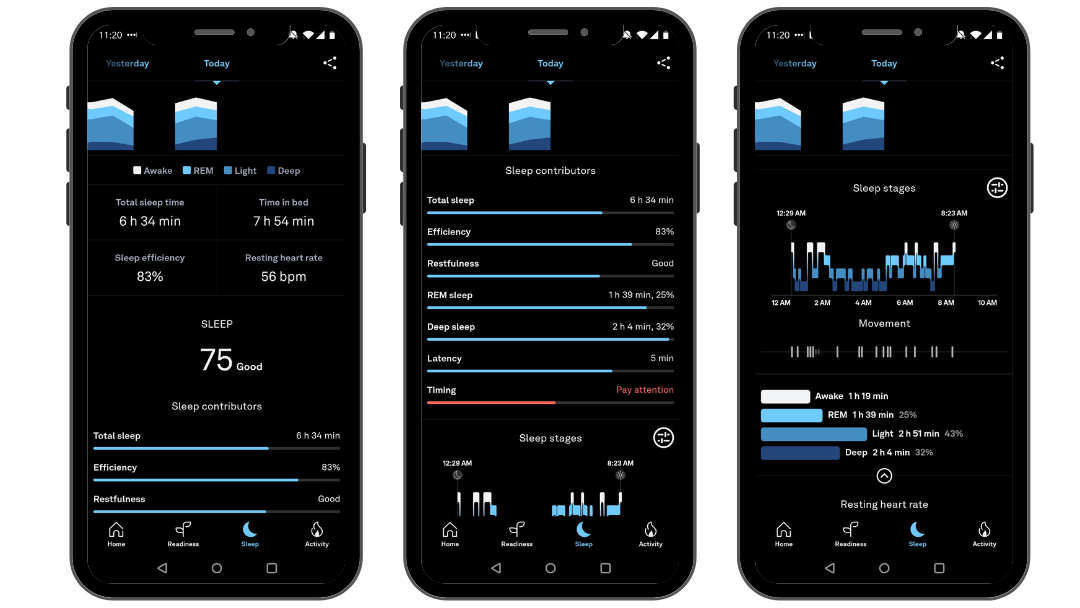
First an overview, then a detailed list of each parameter, and then a breakdown of the type of sleep.
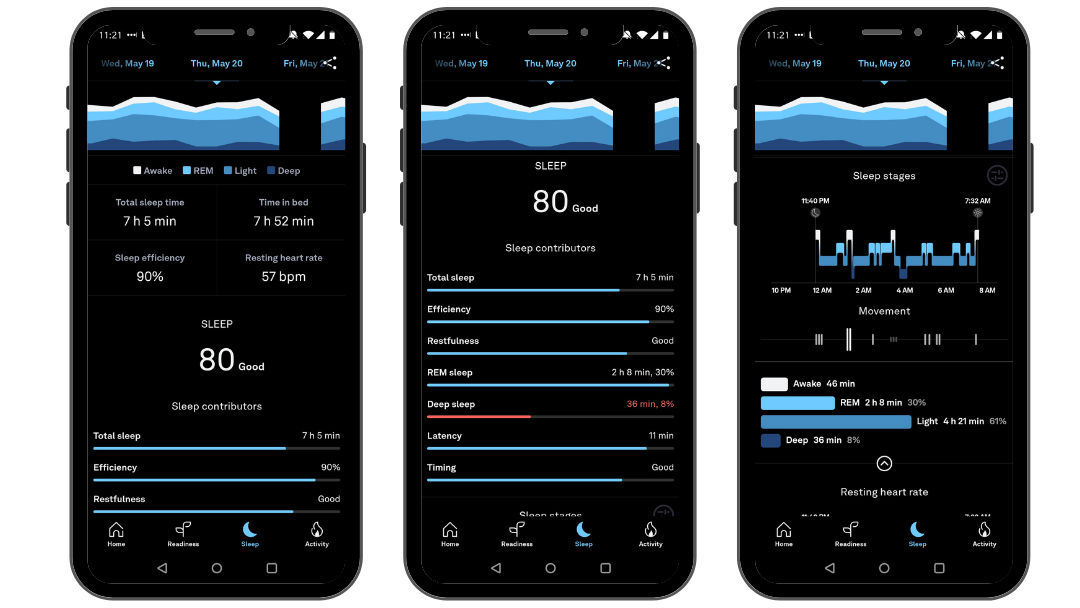
Readiness:
The readiness score is like a parent, telling you to go for it, or take it easy today. Based on your heart rate throughout the night, your body temperature, your heart rate variability (HRV), your sleep and how much activity you have been getting, it gives you a score. Today I got an 82.
That’s pretty high and the Oura app encourages me. However, you can see when I got a lower score, the app suggests I take it easy. It’s a quick and easy way to get a good insight into your overall physical health and for me, it’s sometimes the push or the reminder I need to take care of myself by doing more, or less.
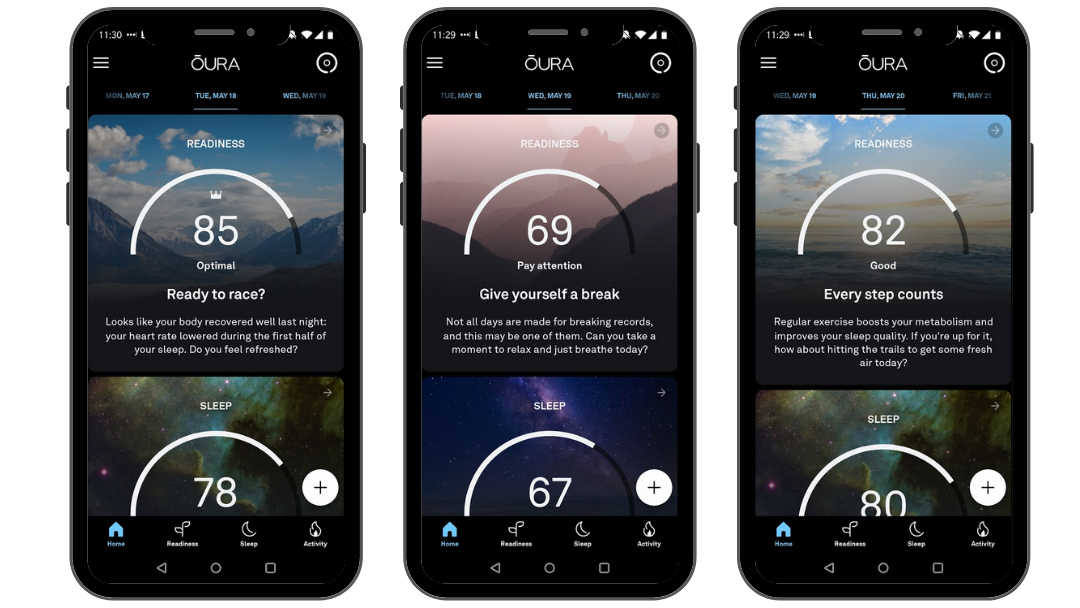
Activity:
Step counters are nothing new, and most of our phones recognize that we’re walking or running and give us this data, and you can also get this in many wearables, such as a smart watch. Unlike some fitness trackers, you cannot see your heart rate, respiratory rate or body temperature while doing exercise. These are only indicated as trends overall, or as part of a sleep report.
Oura has just announced “automatic activity detection” which would be really nice as I’m personally not a fan of opening the app, and tapping through to record an activity. I have been a bit frustrated with the activity tracking. I haven’t noticed any prompts for activity tracking yet, but I’m hoping to see some soon.
I teach dance twice a week, do yoga each morning, take long walks daily, and do strength training a few times a week and Oura is not good at recording this accurately. I have synched my Oura app to my Google Fit (Apple Health) app, so that my Nike Fit strength workouts, me riding my bike, and my walks are imported, and often this is the only way that these are recognized unless I manually input them.
And I’ve noticed that I’ll be teaching dance, with my heart racing and being out of breath as I yell out encouragement to my students, and the app reports that I’ve done some “light” activity. Which is not accurate in my humble, out of breath, heart racing, opinion.
Your steps and general activity will be recognized and there are prompts via phone notifications “Time to stretch your legs a bit?” after periods of inactivity.
There is an activity report which displays if you stayed active, and how long you were inactive for (collectively, not in one period of time); if you moved every hour or if you needed alerts; if you met your daily goals; if your training frequency is optimal or not (have you been training regularly?); training volume (have you been training with enough effort, consistently?); and recovery time. Here’s yesterday when I walked, taught two dance classes and did yoga:
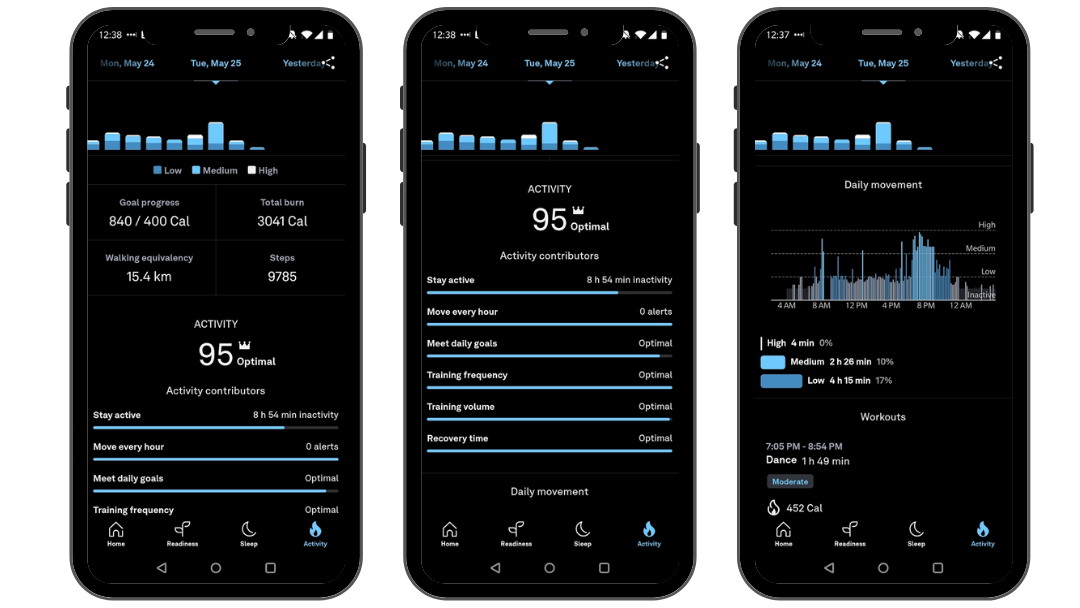
Worth the price?
So the big question is, is it worth the significant expense? The basic Oura ring is €314 (ca. 2.300dkk) and is also available in more expensive models in gold, ‘stealth’ or for a cool €1049 (7.800dkk) you can get it with diamonds. For me, it is. I dislike wrist-worn wearables and I want something I can wear 24 hours a day without thinking about it. I’ve worn it in the shower, the sauna and the ocean, no problem. I take it off to charge – every few days, the battery is quite long lasting.
The ring is a great investment to improve your sleep. With regular use and by paying attention to the app, you’ll get useful, actionable insights about how to improve your sleep, which affects every other part of life. As an activity tracker, I feel like I’d prefer to go with something that gives me better insights into what I’m doing in the moment, if I need to reduce my exertion to be in the right training zone, but I’m specific about that.
For a general overview, the Oura ring is good. And they are coming out with updates regularly. I really enjoy the readiness score, because I feel like it’s giving me permission to take it easy in our always on world. To that point, this article about a woman overcoming her eating disorder with Oura, and this one, about a woman discovering she had a thyroid problem helps to illustrate how Oura is doing a good job of helping people understand themselves better, and improve their health and habits.
Transition of tech
The Oura ring represents a transition of technology from being screen based, to being more a part of our everyday, of our bodies, and as a representation of ourselves. It’s often said that since we spend a third of our lives in bed, we should invest in our sleep, and considering that the Oura ring gives me information about this and my readiness and activity, it makes sense for me.
For this reason and the insights I’ve gained about my sleep and general health, I think it’s worth the investment.
Vanessa Julia Carpenter is the Founder of Kintsugi Design, a technology and design studio specializing in prototyping, whose focus this year is in developing new menopause devices which go beyond hot flashes.

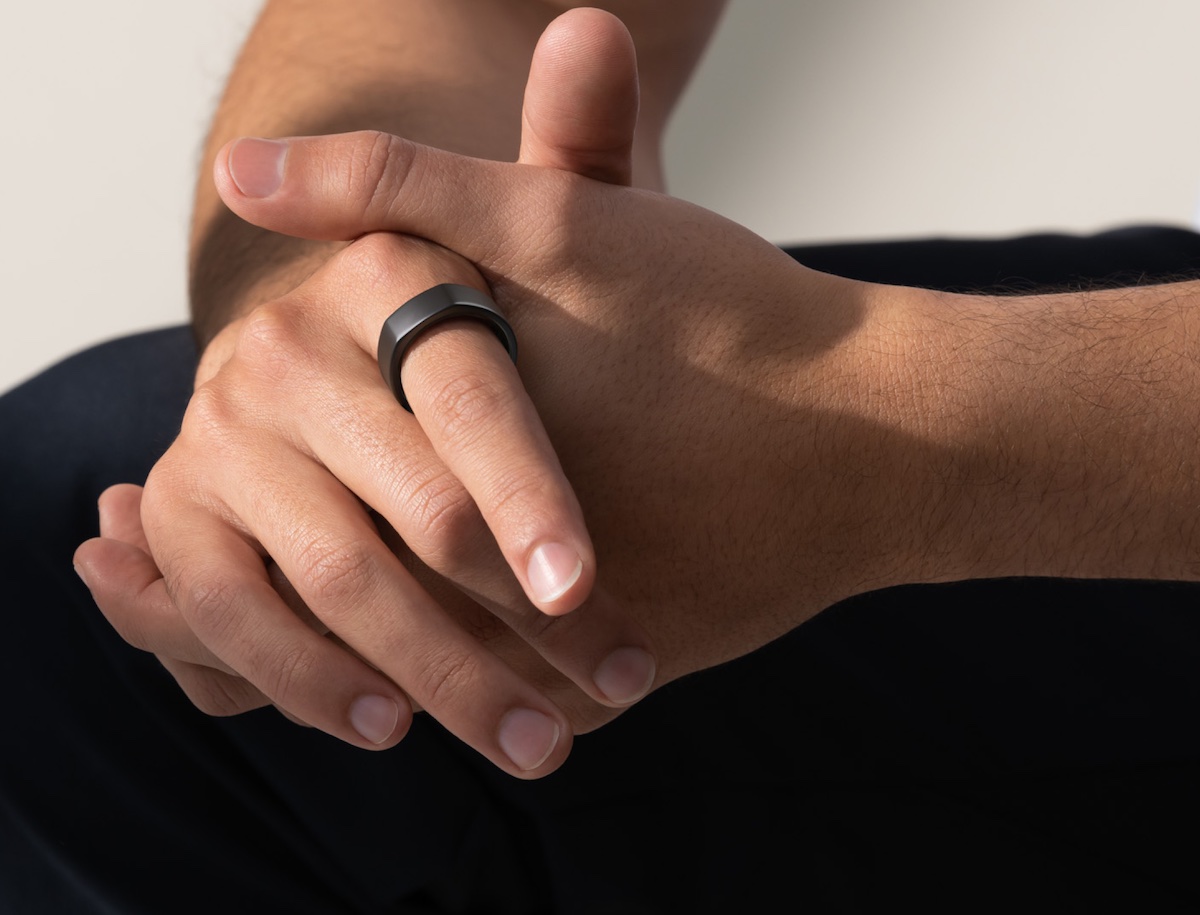
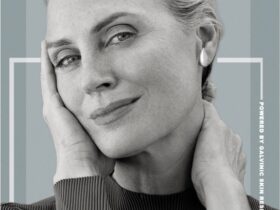
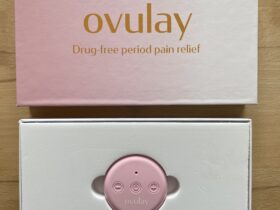
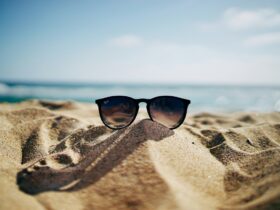

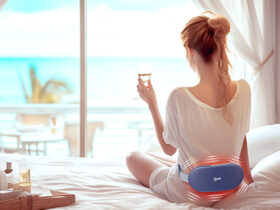
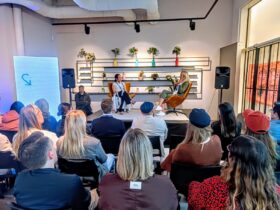

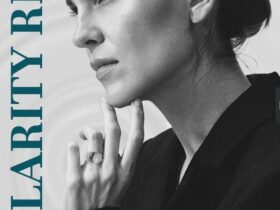
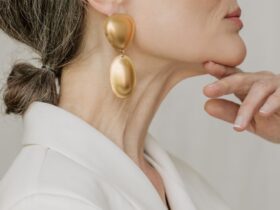
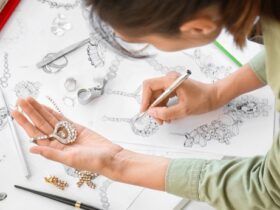

Leave a Reply